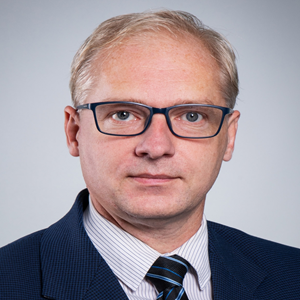Abstract Detail

Dariusz Bochenek
University of Silesia in Katowice, Poland
Abstract
The paper presents the technology and electrophysical properties of two ternary multiferroic composites (with a ferroelectric/magnetic percentage of 90/10) obtained by the free sintering method. In the first composite (BT-BF-F), the ferroelectric component was BaTiO3 (BT) and BiFeO4 (BF) (in the amount of 50/50), and the magnetic component was zinc-nickel ferrite (F). In the second composite (BT-PZT-F), the ferroelectric component was BaTiO3 (BT) and strontium and chromium doped PZT-type solid solution (PZT) (in the amount of 50/50), while the magnetic component was zinc-nickel ferrite (F). The component powders were mixed in a high-energy planetary ball mill for 20 h and calcined at 900°C for 3 h, while the multiferroic composite samples were sintered by the free sintering method at 1250°C for 2 h. The multiferroic ceramic composites' crystal structure, microstructure, DC electrical conductivity, and dielectric, ferroelectric, and magnetic properties were investigated. Studies have shown that the use of two ferroelectric materials in the composite composition has a beneficial effect on the performance parameters, favoring the preservation of high dielectric and magnetic properties of multiferroic composites. The BT-BF-F composite sample exhibits better magnetic properties (higher magnetization values and higher saturation of the magnetic hysteresis loop) but weaker ferroelectric properties (no saturation of the ferroelectric hysteresis loop). In contrast, the BT-PZT-F composite sample exhibits high ferroelectric properties with saturation of the ferroelectric hysteresis loop P-E (maximum polarization Pm=11.2 μC/cm2 , residual polarization Pr=2.95 μC/cm2 and coercive field Ec=0.57 kV/mm) but lower values of magnetic parameters. Multiferroic ceramic composites built based on magnetic and ferroelectric materials show interesting functional properties that are adequate for applications in modern microelectronics.
Biography
Prof. dr hab. Dariusz Bochenek is currently employed as a Professor at the University of Silesia in Katowice (Poland) and is the head of a research group at the Institute of Materials Engineering dealing with the production and testing of ceramic materials and multiferroic composite materials with functional properties for microelectronic and micromechatronic applications. He is a member of the Polish Ceramic Society PTCr's board. He is also a member of the Polish Society of Microscopy PTMi, the European Microscopy Society (EMS), and the International Federation of Societies for Electron Microscopy (IFSM). Research interests: ferroelectric, dielectric and piezoelectric materials, multiferroics, multiferroic ceramic composites, functional materials. No. of published articles and Journals information: Currently in the SCOPUS database there are 134 scientific articles (i.e., Applied Materials Today, Materials, Journal of Alloys and Compounds, Ceramics International, Materials Chemistry and Physics, Mechanical Systems and Signal Processing, International Journal of Applied Ceramic Technology, Journal of Magnetism and Magnetic Materials, Materials Characterization, Microchimica Acta, Journal of Intelligent Material Systems and Structures, Applied Physics A, Applied Sciences, Lubricants, Materials Science and Engineering B, Tribology Online, Coatings, Journal of Materials Science: Materials in Electronics, Journal of Thermal Analysis and Calorimetry, Symmetry, Archives of Metallurgy and Materials, Integrated Ferroelectrics, Journal of Physics and Chemistry of Solids, Advances in Applied Ceramics, Journal of Electroceramics, Applied Physics A: Materials Science and Processing, Phase Transitions, Journal of Materials Science, European Physical Journal B, Materials Science-Poland, Phase Transitions, Materialwissenschaft und Werkstofftechnik, Processing and Application of Ceramics, Composites Theory and Practice, Condensed Matter Physics, Journal of Physics: Conference Series, Physica Status Solidi A, Acta Physica Polonica A, Archives of Acoustics, European Physical Journal – Special Topic, Journal de Physique IV).
